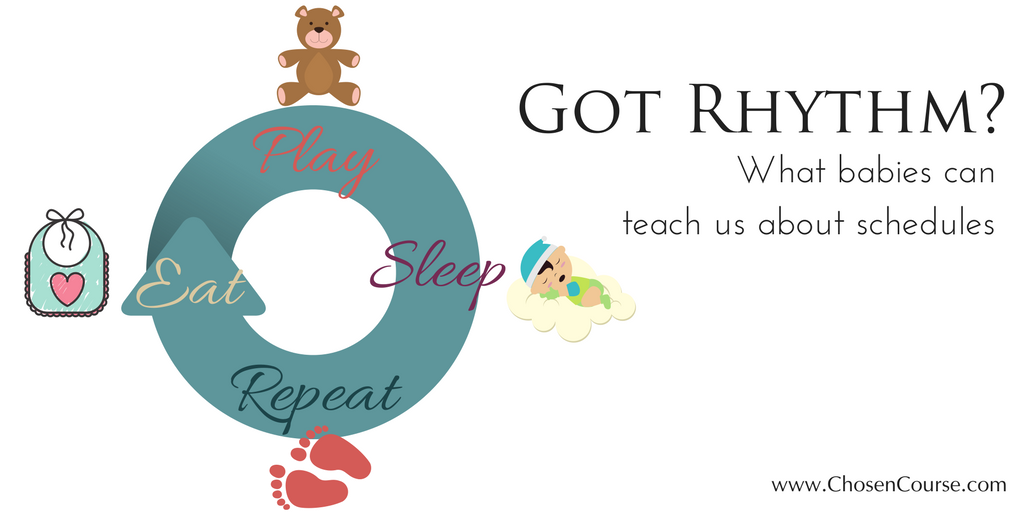For everyone who’s been the parent of an infant, you know how crazy, chaotic your life becomes. Well, that’s been my journey for the last several months. But, as many of you know, or can imagine, it has also been a joy, and my Pumpkin is already teaching me many valuable lessons. One of which I want to share with you today because it’s highly relevant for any entrepreneur.
One of the most common challenges that entrepreneurs face is the lack of structure inherent in our entrepreneurial lifestyle. Unlike working within a corporation where your boss, team, and company culture determine a lot of the details of your daily and weekly workflow, when you are your own boss defining your schedule is entirely up to you.
This change can be both a blessing and a curse. It’s the ultimate freedom! You get to decide! It also means that if you decide poorly, then you’re the one that will most directly experience the consequences. I have worked with MANY entrepreneurs in different industries who are navigating this journey between freedom and challenge; I know some of the pitfalls that occur.
The Extreme Approaches
Sometimes the impulse is to schedule EVERYTHING. If it takes more than 10 minutes it gets scheduled on the calendar. This very rigid approach fills the gap that the old corporate context provided, but it loses some of the fluidity, creativity, and fun that being an entrepreneur can offer.
On the other side, I’ve had entrepreneurs tell me that they’re “allergic to schedules.” Anything that has the slightest “odor” of rigidity or structure, and they run screaming. While I like being a creative, free-spirit as much as the next person, that’s a really hard way to function if you actually want to get stuff done, consistently.
In general, I find a very Buddhist, “middle path” approach works best. If you create just enough structure to know what’s up and what comes next but not so much that you’re stressing yourself out. This is where my daughter comes back into the story. Babies can’t read clocks, and just because you tell them it’s time for a nap doesn’t mean that they’re going to conveniently fall asleep. That said, I have spent the last 8 months becoming an expert in infant sleep patterns… seriously, I even hired a pediatric sleep consultant, and she told me that I should come and work for her because I had spent so much time researching & educating myself about the various strategies.
Here’s the key for handling a baby’s schedule, and it’s the same for most entrepreneurs: You need a rhythm more than a schedule.
Rhythms vs. Schedules
What’s the difference? Schedules are all about the clock. The train leaves at 8am, and if you’re not on it, then it’s gone. Or if it’s running late, then everyone is frustrated and delayed. There’s a specific form and rigidity to a schedule, which is great when it can be reliable, but really sucks when too many pieces are beyond your control.
A rhythm, however, is about having predictable patterns of action which rely much less on the clock. For instance, in a baby’s world, they wake up, get a clean diaper, eat, play, then sleep again. And the pattern repeats like that all day until bedtime. Whether the rhythm takes 2.5 hours during one cycle or 3.5 hours during the next, the same basic steps happen over and over again.
While most entrepreneurs have a LOT more variation in the activities of their day and week, the concept still transfers. That’s why it’s often better to have a rhythm to your day or week, rather than a rigid schedule if you want to create your middle path.
An Entrepreneur’s Rhythm
What if you were to think of your day in cycles, just like a baby’s day?
1st Cycle – Wake up & get ready for day- shower, exercise, dress, breakfast, etc.
2nd Cycle – Early Morning Work
Mid-morning break
3rd Cycle – Late Morning Work
Lunch
4th Cycle – Early Afternoon Work
Mid-Afternoon Break
5th Cycle – Late Afternoon Work
6th Cycle – End of Day Transition Time – Exercise, pick up kids, cook dinner, tasks around home
Dinner Time
7th Cycle – Early Evening time with partner/family
8th Cycle – Self-Care & Prepare for Bed
Without referencing time or clocks at all, most of our days look something like this on a regular basis, don’t they? Granted, if you haven’t taken a “break” during your work day in years, then I will refer you to this post about the importance of your lunch break or this one about how brain breaks help your productivity for further consideration.
However, for most of us, this is a fairly accurate picture of our daily rhythm. So, why not think about planning your tasks for today with this type of rhythm in mind. Choose your focus for each cycle intentionally. Maybe writing that new proposal will happen early in the day during your 2nd cycle, and reviewing your email inbox can wait until 3rd cycle. Maybe plan that coffee meeting for 5th cycle so that you can run errands or go to the gym more easily during your 6th cycle.
What if you took your Inspired Action and 3 bonuses and tried to work through all 4 tasks during the morning cycles so that you’d have some flex time to respond to other issues that arise during the afternoon?
If you approach your day with an eye to rhythm rather than schedule, then you can get a LOT done consistently, but not drive yourself crazy with unnecessary and stressful levels of structure. As I’ve said to my clients for years,
Create the shape, but hold it loosely.
That’s my secret to productivity without stress.
Next Steps
If you’d like to explore more about what your ideal daily and weekly rhythm might look like, then you’ll want to grab our Life Rhythm Map template and experience the free energy management mini-course that comes with it.



